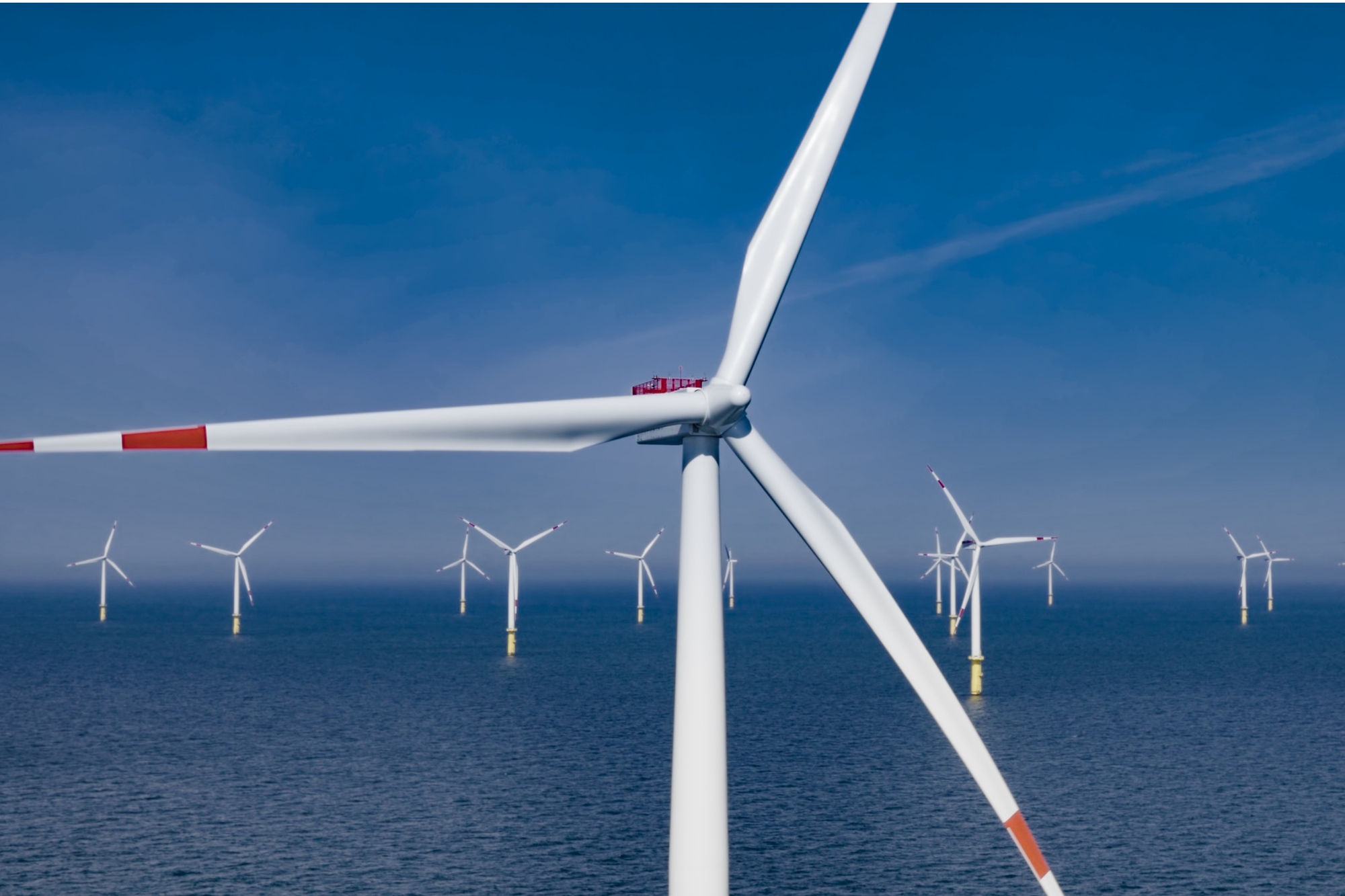By Matthew Kredell
Offshore wind electricity could bring employment gains, cost savings, carbon dioxide reductions, and improve the stability of California’s electric grid according to a new study from the USC Schwarzenegger Institute.
Titled “California’s Offshore Wind Electricity Opportunity,” the report highlights the economic impacts available as the Golden State seeks to take advantage of its coastal location by farming this natural energy resource.
The study estimates that developing 10 gigawatts of offshore wind (OSW) would contribute toward total resource cost savings of approximately $1 billion. Building those wind facilities could create up to 65,000 jobs during the construction phases and up to 4,500 operation and maintenance jobs for the entire lifetime of the facilities.
Schwarzenegger Institute faculty fellows and USC Price School of Public Policy research professors Adam Rose and Dan Wei served as main authors of the report.
“Offshore wind energy is an enormous economic opportunity for the state of California,” Rose said. “Developing 10 gigawatts of offshore wind could deliver thousands of job opportunities to hard-hit communities, while saving Californians billions through lower electricity rates.”
The Schwarzenegger Institute will host a webinar on August 18th at 3 p.m. on California’s offshore wind potential. Speakers will include David Hochschild, Chair of the California Energy Commission, and Assemblymembers David Chiu and Laura Friedman, authors of legislation to jumpstart the state’s offshore wind energy industry.
In 2018, California passed SB 100, the California 100% Clean Energy Act. It set the goal for California, the world’s fifth-largest economy, to produce all carbon-free electricity by 2045. The joint agency report produced as part of the bill concluded that 10 gigawatts of offshore wind was needed to cost-effectively achieve that goal.
The Schwarzenegger Institute report explains the potential for offshore wind to play a pivotal role in meeting the goals set by SB 100, and how California is well situated to become a global hub for offshore wind development.
“I have always said that California needs an all of the above energy strategy and there is no doubt that offshore wind is an important part of that portfolio,” said former California Gov. Arnold Schwarzenegger. “By deploying this clean energy resource, we can create thousands of jobs and meet our energy demands, all while reducing emissions and cleaning up our air. At the Schwarzenegger Institute, we are committed to finding solutions that reduce air pollution and climate change."
Wind-generated energy is nothing new in California. Many Angelenos likely have seen the wind farm in the San Gorgonio Pass on the way to Palm Springs. Wind energy supplies over 8% of California’s electricity, according to the California Wind Energy Association.
In addition to the economic and employment benefits, the study highlighted the following positive results of OSW:
• Improved reliability of electricity services due to its higher and more stable capacity factors and the timing of its peak electricity generation.
• Potential reduction of 4.73 million metric tons of carbon dioxide equivalents by the year 2040, translating into the prevention of $340.45 million of global climate change damages.
• Minimization/reduction of environmental impacts associated with the construction of land-based energy infrastructures such as onshore wind and solar.
• Improvements in environmental justice through the reduction of ordinary air pollution in socioeconomically disadvantaged urban areas of the state and construction of OSW facilities in some of its lagging regions.
The report acknowledges that there are challenges that must be addressed in order for offshore wind to reach its full potential in California. These include affordability, development of transmission infrastructure and effects on the ocean environment and wildlife.
Chiu and Friedman authored the current legislation, AB 525, to answer the call of SB 100 by starting state agencies on the path toward planning and addressing these barriers.
California already is a world leader in renewable energy, and offshore wind seems like the next piece of the puzzle to reach the state goal of producing 140 gigawatts of renewable energy and storage by 2045.
Constant winds at higher speeds over water make offshore wind a more reliable and efficient method of power generation. That could be what keeps the lights on for Californians in the future, as wildfires resulting from climate change increasingly lead to power outages.
Offshore wind energy production also is the perfect complement to California’s growing solar grid. In the evening hours when solar energy declines is when wind energy typically peaks.
“Offshore wind power could not be coming at a better time for California,” Friedman said. “With climate change threatening power supplies across the Western U.S., having a local source of clean power that complements California’s solar generation will be invaluable in coming decades.”

